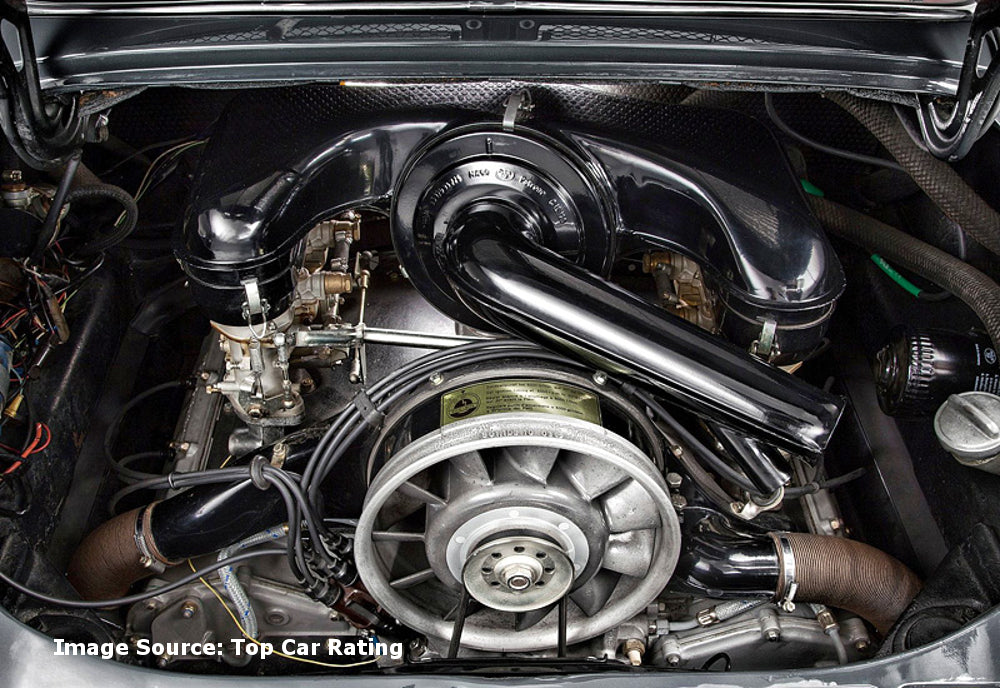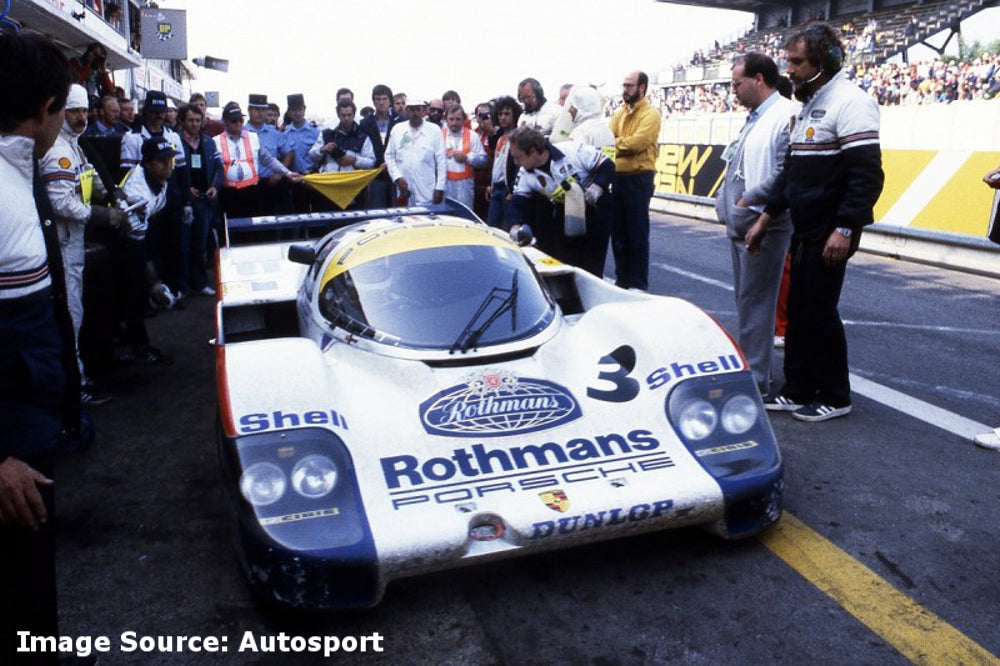While the 911 has always been the flag-bearer of the storied Porsche marque, the iconic flat-six engine, and in particular, the air-cooled version is what has endeared the sports car to generations of followers.
And rightly so. Not only does the novel firing order produce a unique exhaust note, the flat ‘Boxer’ engine has many interesting features that give it the edge from a design point of view.
These features were so compelling to Karl Benz that back in 1896, he devised the first boxer flat engine that he called the “contra”. He named it the contra because its two pistons worked in opposition to one another. Its underlying design principle – both then and now – is that the cylinders should lie flat and slightly offset to each other, on opposite sides of the crankshaft, with opposing sets of pistons working in opposition to one another.
The boxer flat engine, particularly in six-cylinder guise, is also inherently smooth, with no primary or secondary out-of-balance forces to dampen. The only downside, compared to a ‘non-boxer’ flat-six layout, is the need for a separate crank throw for each rod and piston, slightly adding to the engine’s length, weight, and cost.

As used in the iconic 911, flat and air-cooled engines with no water-jackets and cooling system are light weight and relatively compact, allowing for a lower centre of gravity. By placing the powertrain at the rear of the vehicle also makes it easier to achieve an aerodynamically sleek front-end, as well as improving traction.
In short – the ideal engine for a sports car such as the Porsche 911.
The origin of the Porsche family of flat engines can be traced back to the VW Beetle. Its 1.1-litre, four-cylinder engine was the first to be fitted to a Porsche - the 356-001.
However the defining moment for Porsche’s iconic flat-six air-cooled engines came at the 1963 Frankfurt motor show when the company unveiled the successor to its four-cylinder 356 sports car. First christened the 901, after an objection by Peugeot, the 901 was renamed the 911. Porsche’s first flat-sixes reached European customers in ’64 and U.S. buyers the following year. Nevertheless, since nothing hindered Porsche from retaining the 901 code for internal use, the 911’s flat-six engine was so named.
Hans Mezger’s Design-Brief For The Iconic 901 Flat-Six Engine

From the outset of the 901 project, Hans Mezger – an automotive engineer who joined Porsche in 1956 and deserves most of the credit for the engine - had some very clear objectives in mind.
Top of the list was a minimum power output. Based on the company’s past success the engine had to produce at least 130 DIN (148 SAE gross) horsepower to match the best engine in the 356.
This minimum power requirement automatically disqualified pushrod engines after the 2.0-liter Type 745 designed by Mezger’s predecessor in 1960 failed to produce the desired 148 horsepower. So for the 901 Mezger chose a Single Overhead Camshaft layout with one cam atop each two-valve cylinder head opening both valves via rocker arms.
Another non-negotiable was attributed to Ferry Porsche’s “shoemaker, stick to your last” philosophy, which meant keeping the air-cooled, opposed-cylinder layout that had worked perfectly for the VW Beetle and Porsche 356.
The reverse of the philosophy - learn from your mistakes - also applied.
When an early Type 821 experimental engine suffered oil starvation during hard cornering, Ferry Porsche approved the expense of a dry-sump system that provided several benefits, including reduced losses from the crank spinning in the oil in a ‘wet-sump’, a more compact engine, larger oil reservoir with cooler oil, and eliminating oil-surge during hard acceleration, cornering, and braking.
The engine’s displacement was largely determined by Germany’s post–World War II economy that was still on the mend and subjected to high fuel prices. So, In January 1963, Mezger opted to stick with the 356 Carrera’s 2.0-liter displacement. Having decided on the flat layout and displacement he settled for six cylinders as the happy medium between the 356’s four and Porsche’s Type 753 flat-eight racing engine that was under development.
Mezger also carried over the 745’s 80-mm bore and 66-mm stroke because he wanted the bore as big as possible to accommodate the larger valves required for good high-rpm breathing. In a shrewd move, Mezger chose to space the bores 118 mm apart, leaving ample room for “bored” engines in future.
To assist with cooling, the cylinders supplied by Mahle were a “biral” design, consisting of a thin iron liner surrounded by a liberally finned die-cast aluminum ring. This arrangement, also inherited from the 753 engine, provided ample surface area with cooling airflow over, under, and between the cylinders.
The Cool Secret To The Most Successful Air-Cooled Engine Of All Time

More than a dozen engine manufacturers exploited air cooling in the 20th century, however, none as successfully as Porsche. Patriarch Ferdinand was an early adopter, beginning with Austrian manufacturer Austro-Daimler’s aircraft-engine design effort in 1912. Air-cooled engines with up to 12 cylinders and 360 horsepower followed for fighter aircraft, airships, helicopters, locomotives, and motorized gun carriages.
Because of its simplicity, air cooling was also an obvious choice for the “peoples’ car” conceived in the early 1930s. Dispensing with the coolant, pump, hoses, and radiator trimmed cost and weight and helped make the Beetle’s engine compact enough to mount behind the rear wheels. In the 911, that same location left room for a front stowage compartment and rear jump seats, adding utility to the sports car’s list of attributes.
Because of its higher heat capacity water conducts heat from a hot metal surface better than air. To make up for this, designers committed to air cooling have several cooling strategies at their disposal. The most common approach is to attach fins to the cylinders and heads to increase the surface area by up to a factor of 10, or in some designs, even more.
However to make sure the significant heat generated by the powerful Porsche 901 would be dissipated Mezger also equipped the engine with what would become Porsche’s ‘trademark’ cooling fan, that directed air over the cylinders and heads.
In a perfect world, the cooling airflow would be proportional to the power produced by the engine. However with a fixed ratio crank-driven fan, flow is largely proportional to engine speed. To ensure sufficient airflow under all driving conditions and ambient temperatures, the 911 was equipped with an oversized fan to ensure problem-free motoring.
The 901’s 250mm 11-blade cooling fan sat in a fiberglass duct atop the engine and was spun by a V belt at 1.3 times crankshaft speed. Air drawn through decklid vents by the fan was blown through metal ductwork over the cylinders, heads, exhaust manifolds, and oil cooler, then out the bottom of the car. Flow through boxes surrounding the exhaust manifolds also heated the cabin.
Mezger’s air-cooled, flat-six boxer engine entered the market weighing 185 kg with an output of 148 horsepower from 1991 cc. The 901 engine’s specific output - horsepower per unit of displacement - topped that of big- and small-block Chevy V-8s, the Mercedes-Benz SL’s SOHC six, and Jaguar’s E-type DOHC six.
In 1965, Car and Driver magazine clocked the new 911’s run to 60 mph in 7.0 seconds and measured a top speed of 130 mph. And there was more to come as the air-cooled 901/911 grew and evolved during its long and illustrious life, that continued until the 911 Type 993. In the top-of-the-range 911 Carrera RS, the 3.8-litre air-cooled flat engine achieved 221 kW without turbocharging, while twin turbochargers boosted power to 331 kW.
Did you enjoy this article? Avoid missing future publications by subscribing to this blog's RSS feed using
https://frazerpart.com/blogs/porsche-history.atom







2 comments
Graham
Thanks, enjoyed your blog on the 911 evolution
Thanks, enjoyed your blog on the 911 evolution
Gordon Buckley
Enjoyed your summary of the evolution of this iconic engine. Thanks.
Enjoyed your summary of the evolution of this iconic engine. Thanks.